MENU
MENU
Tea production area: Shirayama Town, Nachikatsuura Town, Tanabe City, etc.
Brand: Kishu tea, Kawazoe tea, Hikigawa tea, Irokawa Tea, Otonashi tea, etc.
Types of tea: Sencha, bancha, hojicha, black tea, etc.
Kishu tea
Wakayama Prefecture previously was known as the Kishu area. So, tea cultivated and produced in Wakayama Prefecture is called Kishu tea, however, there are also regional tea brand names. Irokawa tea is from Nachikatsuura Town, Otonashi tea is from Tanabe City and Kawazoe tea is from Ichikano, Shirahama Town. Each tea production area is in a mountainous region where the daily temperature has large variations and fog is often generated. This is good for tea cultivation.
Pilgrimage to the Kumano shrines and tea
Kumano is located in the southern part of Wakayama and Mie Prefectures on the Kii Peninsula.
It has been believed that from ancient eras that the Kii Mountains are sanctuaries for deities and that Kumano is a dwelling place for the gods and Buddha. Many people have visited the Kumano Sanzan (the three Grand Shrines of Kumano)..
Tradition says that Irokawa tea has been cultivated from the Muromachi Period (the 13 to 14th century) and that the tea was served to the pilgrims of the Kumano Sanzan.
The Kii Mountains and the Kumano Kodo (the ancient pilgrimage routes to the three Grand Shrines of Kumano) were recognized as an UNESCO World Heritage site in 2004.
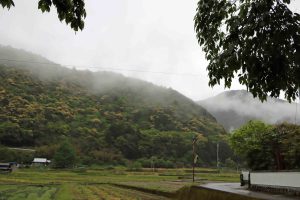
Ichkano, Shirahama Town (April 2019)
Kawazoe tea
Kawazoe tea is cultivated in the Ichikano region of Shirahama Town where it is a mountainous region.
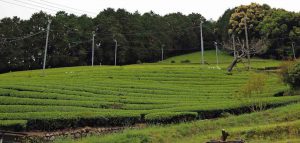
Tea fields in Ichikano, Shirahama Town (April 2019)
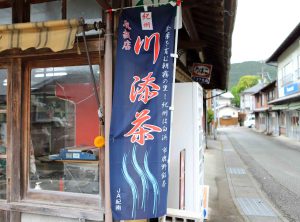
Ichikano, Shirahama Town (September 2019)
Michinoeki Siharamakaigan Miraikan sells a variety of Kawazoe tea and sweets using Kawazoe tea in Shirahama Town.

Kishu Kawazoe tea (black tea) at Michinoeki Siharamakaigan Miraikan (April 2019)
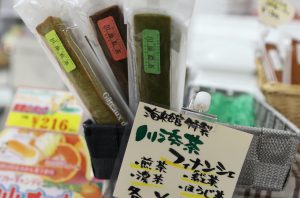
Financier using Kishu Kawazoe tea at Michinoeki Shiharakaigan Miraikan (April 2019)
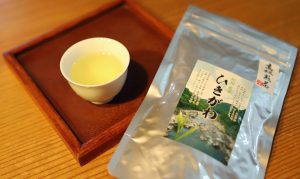
Sencha Hikigawa tea (April 2019)
Kishu Chagayu
Chagayu is a tea rice porridge and has been eaten for many years in the Wakayama and Nara Prefectures.
A cotton pouch containing bancha leaves and water are put into a pan and boiled. Then, rice is cooked with the tea in the pan until the rice becomes soft. When eating the chagayu, add salt to taste. Chagayu is eaten with Japanese pickles or side dishes.
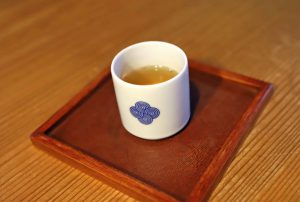
Hikigawa bancha, Kishu tea (April 2019)
Tea related facility:
道の駅志原海岸「海来館」http://www.hikigawa-miraikan.com
Tea mascot Yuru-Chara:
Ceramic and pottery art: Kishu ware
Reference:
松下智 (平成3年) 日本名茶紀行 (初版) 雄山閣出版
高野實・谷本陽蔵・富田勲・中川致之・岩浅潔・寺本益英・山田新市 (2005) 緑茶の事典 (改訂3版) 柴田書店
文化庁 世界遺産 https://www.bunka.go.jp/
熊野本宮大社 http://www.hongutaisha.jp/
和歌山県 https://www.pref.wakayama.lg.jp/index.html
東牟婁振興局 >色川茶(煎茶)
西牟婁振興局 >川添茶(煎茶)
西牟婁振興局 >音無茶(煎茶)
道の駅志原海岸海来(みらい)館
http://www.hikigawa-miraikan.com
*The information provided on this site may be updated. If you find any information in this article that is incorrect, new, or incomplete, please contact CHAMART.
*The site does not describe all “Teas of Japan” or all “Teas of the World”. Additionally, each article expresses the writer’s personal experience and feelings.
#kishutea #itagatea #japanesetea #teatrip #wakayama